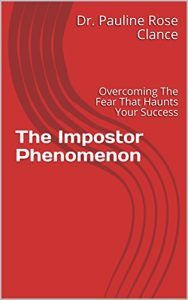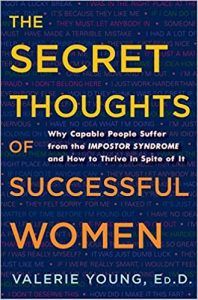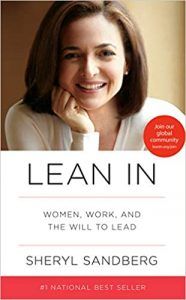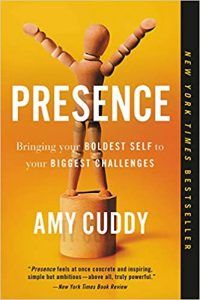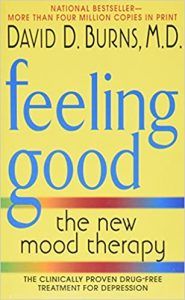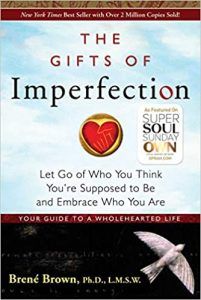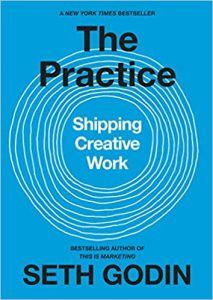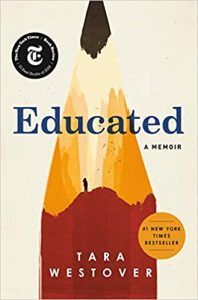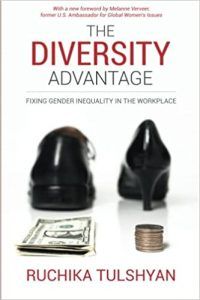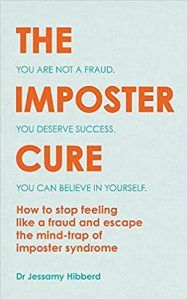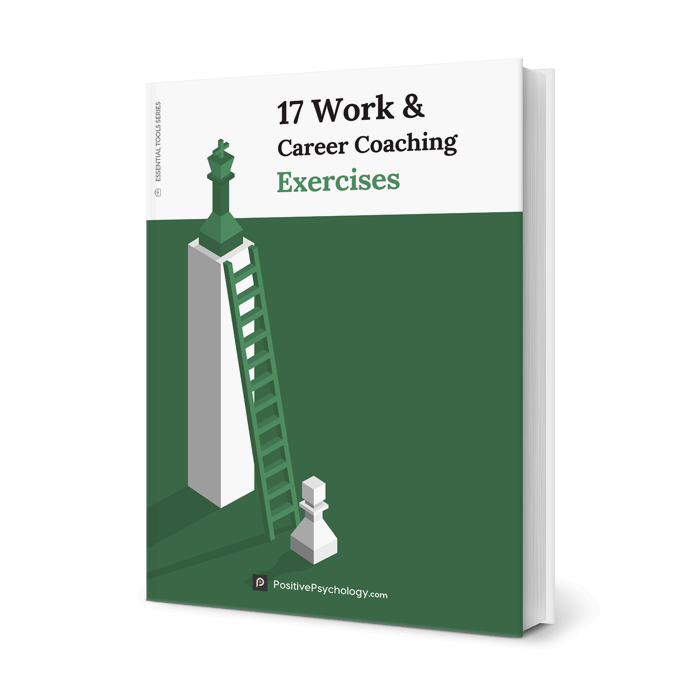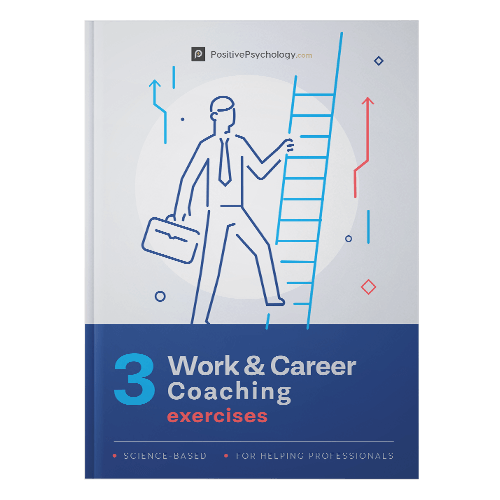10+ Must-Read Books to Overcome Imposter Syndrome
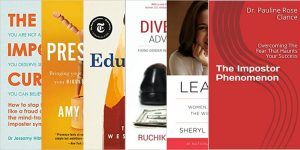 People from all walks of life feel like an imposter at certain points.
People from all walks of life feel like an imposter at certain points.
As a medical doctor, I’m no stranger to this feeling. It often seems my achievements have been accidental and that I might be exposed as a ‘fraud’ at any minute.
It’s clear, however, that I’m far from alone. In fact, a recent UK survey found that approximately 50% of men and women struggle with imposter syndrome (Josa, 2019).
Whether you’re searching for insight on imposter syndrome for yourself or a client, this article covers 10 books that shed light on the phenomenon. Some are more theoretical, some take a more practical approach, and others inspire with firsthand accounts.
Before you continue, we thought you might like to download our three Work & Career Coaching Exercises for free. These detailed, science-based exercises will help you or your clients identify opportunities for professional growth and create a more meaningful career.
This Article Contains:
- 1. The Impostor Phenomenon
- 2. The Secret Thoughts of Successful Women
- 3. Lean In: Women, Work and the Will to Lead
- 4. Presence: Bringing Your Boldest Self to Your Biggest Challenges
- 5. Feeling Good: The New Mood Therapy
- 6. The Gifts of Imperfection
- 7. The Practice: Shipping Creative Work
- 8. Educated: A Memoir
- 9. The Diversity Advantage: Fixing Gender Inequality in the Workplace
- 10. The Imposter Cure: Escape the Mind-Trap of Imposter Syndrome
- PositivePsychology.com’s Relevant Resources
- A Take-Home Message
- References
1. The Impostor Phenomenon: Overcoming the Fear That Haunts Your Success – Dr. Pauline Rose Clance
Imposter syndrome is a social phenomenon rather than a clinical entity, making its definition varied.
Clinical psychologists Pauline Rose Clance and Suzanne Imes (1978), however, originally developed the concept and defined it as “a psychological experience of intellectual and professional fraudulence.”
It makes sense, then, to begin with Clance’s 1986 seminal work The Impostor Phenomenon, which explains the nature of imposter syndrome.
This three-part book examines how and why the experience occurs and provides guidance on how to overcome it with several practical exercises interspersed throughout.
For instance, Dr. Clance outlines the ‘ABC’ framework for success: Ability, Breaks, and Courage. She clarifies that people with imposter syndrome fixate on the belief that their achievements are due only to breaks and courage, as opposed to their abilities.
Anyone wondering whether they really are experiencing imposter phenomenon would also benefit from Dr. Clance’s self-assessment test, along with her description of how those with an ‘imposter profile’ get trapped in cycles of self-doubt, negativity, and fear.
Interestingly, there are also sections of the book devoted to exploring how imposter phenomenon manifests in different cultural roles such as students, mothers, and physicians.
Find the book on Amazon.
2. The Secret Thoughts of Successful Women: Why Capable People Suffer From the Impostor Syndrome and How to Thrive in Spite of It – Dr. Valerie Young
This book addresses why capable people suffer from imposter syndrome and attempts to create a roadmap for thriving despite it.
Having suffered from imposter syndrome that threatened to derail her academic and career aspirations, Dr. Valerie Young made it a priority to understand why so many intelligent people end up feeling fraudulent.
While renowned for her expertise on imposter syndrome in women, her work is widely accepted as being applicable to anyone.
The book is packed with useful distinctions and reframing exercises that advance the reader’s understanding while helping them master their challenging inner critic. For instance, Dr. Young outlines seven factors that contribute to imposter syndrome, such as being a student or working in a creative field.
She also classifies imposter syndrome into five ‘competence types,’ a helpful reminder that people aren’t homogeneous. Depending on people’s personalities, childhoods, and coping styles, their experience of feeling like an imposter and holding themselves back from greater success will manifest in different ways.
As an example, one of the competence types is the highly common ‘Perfectionist.’ Dr. Young suggests ways that perfectionist types can better respond to failure. They should change their relationship to risk, which differentiates those who manage to control their imposter syndrome from those who don’t.
Find the book on Amazon.
3. Lean In: Women, Work and the Will to Lead – Sheryl Sandberg
Sheryl Sandberg has quite a résumé. Not only has she occupied high-level positions at Google and Facebook, but prior to that, she worked as Chief of Staff at the U.S. Treasury Department.
Through a combination of entertaining anecdotes, well-researched data, and practical advice, Lean In primarily explores gender inequality both at home and at work.
Though controversial at points, Sandberg’s book resonated with many in part because of its powerful call for women to ‘lean in’ to their careers and aspire to “dream big, forge a path through the obstacles and achieve their full potential.”
Whatever you might think about her core message urging women to envision more for their professional lives, one strength of the book is her openness and willingness around disclosing her personal failings and feelings of self-doubt.
People have drawn inspiration from knowing that even individuals like Sandberg, who appear highly competent on the outside, experienced the very same sense of imposter syndrome.
Sometimes, it helps just to hear that you aren’t alone.
In order to continue to grow and challenge myself, I have to believe in my own abilities. I still face situations I fear are beyond my capabilities. I still have days when I feel like a fraud. And I still sometimes find myself spoken over and discounted while men sitting next to me are not. But now I know how to take a deep breath and keep my hand up. I have learned to sit at the table.
Sheryl Sandberg
Find the book on Amazon.
4. Presence: Bringing Your Boldest Self to Your Biggest Challenges – Amy Cuddy
Presence considers imposter syndrome from a different angle.
Perhaps best known for her TED Talk on how body language can shape confidence, social psychologist Amy Cuddy has distilled much of her work in this self-help book. It outlines how the practice of ‘power posing’ can help to lessen the intensity of imposter syndrome.
Cuddy emphasizes the value of normalizing and reframing imposter syndrome.
For instance, in one thought experiment, she proposes the following: given how common imposter syndrome is, either everyone is inadequate, or everyone’s sense of self-worth malfunctions. If people can remember that the second option is more likely, they can also challenge their inner critic during stressful moments.
Of note is an especially useful chapter that summarizes the research on imposter syndrome to date and considers it through the lens of her work on nonverbal communication.
The crux of Cuddy’s approach is to harness the power of the mind–body connection. She claims that empowerment and movement are intrinsically linked, influencing not only how we’re perceived by others, but also how we perceive ourselves in everyday life.
The book goes on to consider exercises that tackle low self-worth and low self-confidence, primarily using power poses. While some have disputed the replicability of Cuddy’s research, there seems to be evidence that power poses can increase subjective feelings of authority (Ranehill et al., 2015).
Find the book on Amazon.
5. Feeling Good: The New Mood Therapy – Dr. David D. Burns
In Feeling Good, psychiatrist David Burns cogently explains how to… well… feel good! Drawing on the principles of Cognitive-Behavioral Therapy, he details how a person can seek to lessen the frequency of self-doubt and challenging emotions through first shedding light on the root cause: our thinking patterns.
This is useful in the context of imposter syndrome. Though not strictly a clinical phenomenon, it has certain elements in common with depression and anxiety, such as ruminating on low self-worth, feeling anxious/fearful about one’s capabilities, and so on.
Although Feeling Good is a lengthy work, very little space is wasted. It is abundant in pragmatic techniques and powerful mindset shifts to help overcome negative feelings.
Not least of these is Dr. Burns’s explanation of the 10 cognitive distortions (or ‘thinking errors’) that underlie most, if not all, negative feelings. While imposter syndrome isn’t addressed directly, spotting these distortions is an important step for anyone looking to understand which beliefs are sabotaging them.
One of the cognitive distortions, for example, is ‘Disqualifying the Positive.’ This is where neutral or positive experiences are negated or explained away with negative ones (e.g., “that success didn’t count” or “it was nothing, really”). As Dr. Clance identified, learning not to discount achievements is a key obstacle in overcoming imposter syndrome.
Furthermore, Dr. Burns suggests a framework for building self-esteem by letting go of what he believes to be the faulty idea that anything external can reflect on one’s immutable self-worth.
Find the book on Amazon.
6. The Gifts of Imperfection: Let Go of Who You Think You’re Supposed to Be and Embrace Who You Are – Dr. Brené Brown
Written by distinguished shame researcher Dr. Brené Brown, The Gifts of Imperfection imparts a multitude of learning points for anyone struggling with imposter syndrome.
With her knowledge derived from not only extensive research but also personal experience, Dr. Brown warmly conveys the importance of cultivating values like courage, compassion, and connection to combat feelings of shame and inadequacy. This, she argues, is how we come to feel we are ‘enough.’
The book emphasizes the importance of developing authenticity, ‘owning your story,’ and letting yourself feel vulnerable as routes to fighting the stigma that so often accompanies feeling like a fraud. Dr. Brown suggests that letting the people you care about see you as imperfect not only strengthens those relationships, but also provides much-needed support and resilience when facing challenges.
With each chapter concluding with succinct learning points and useful exercises, this resource will help those with imposter syndrome cultivate more self-compassion.
Find the book on Amazon.
7. The Practice: Shipping Creative Work – Seth Godin
Those for whom work is largely a creative endeavor are often familiar with imposter syndrome.
Not only is the value of their work subjective, but creatives also spend long stretches of time working solo, with little in the way of positive feedback. One book that explores this conundrum is The Practice.
Marketer and prolific thought-leader Seth Godin has already written extensively on how to cope with fear of the unknown, but The Practice is particularly relevant to entrepreneurs and creatives who feel like frauds.
For instance, Godin outlines how our cultural obsession with the ‘outcome’ rather than the ‘process’ can contribute to imposter syndrome. We judge books by how many copies they sell, resulting in authors getting attached to these endpoints and doubting their legitimacy.
Instead, he argues, we should focus on the journey of incremental improvement. Like Amy Cuddy, he proposes one route through is to ‘fake it till you make it’:
“The very nature of innovation is to act as if – to act as if you’re on to something, as if it’s going to work, as if you have a right to be here. Along the way, you can discover what doesn’t work on your way to finding out what does.”
Interestingly, Godin also raises the possibility that imposter syndrome is a sign you’re doing ‘important work,’ with fear of failure almost a prerequisite for personally meaningful projects.
Find the book on Amazon.
8. Educated: A Memoir – Tara Westover
Given how common imposter syndrome is in students, Educated may be a compelling read for anyone in academia plagued by the phenomenon.
Written by Tara Westover, a writer and historian, the book is her memoir of a remarkable journey. It begins with her childhood living on a rural farm in Idaho and culminates in her rise to eminence, gaining a PhD from Cambridge University.
In light of the challenges she faced being raised in a self-isolating Mormon family, the account is inspirational. Taking her education into her own hands, the memoir recounts how every step of the way, Westover felt like she didn’t fit and feared being exposed as a fraud at any moment.
For anyone suffering from imposter syndrome, her words are sure to resonate and provide hope for what is possible.
Find the book on Amazon.
9. The Diversity Advantage: Fixing Gender Inequality in the Workplace – Ruchika Tulshyan
While the books mentioned so far take an individualist approach, The Diversity Advantage looks beyond to cultural contexts.
Ruchika Tulshyan is a journalist covering diversity and leadership, as well as a passionate advocate for inclusion in the workplace.
She recently wrote an illuminating article for Harvard Business Review focused on experiences of impostor syndrome in women. In it, she argues for switching the conversation from how to cope with impostor syndrome to why our workplaces give rise to these feelings in the first place.
Explanations posited by Tulshyan center around the notion that biases like sexism, classism, and racism are still very much ingrained in our businesses and institutions. When those on the receiving end of marginalization feel its impact, they are more likely to question their competence and prior successes.
In her book, she writes further on why having an inclusion strategy is essential for organizations not just from an ethical standpoint, but a practical one too. With women making up more and more of our workforce, success often depends on creating the kinds of working environments where everyone can feel safe, welcome, and supported.
The Diversity Advantage may offer a refreshing new perspective and a warning not to over-pathologize impostor syndrome or use the label to discriminate against those not conforming to male-biased social styles.
As Tulshyan says, maybe we need to move away from “fixing women at work instead of fixing the places where women work.”
Find the book on Amazon.
10. The Imposter Cure: Escape the Mind-Trap of Imposter Syndrome – Dr. Jessamy Hibberd
Concluding the list is Dr. Jessamy Hibberd’s 2019 The Imposter Cure, a self-help guidebook specifically dedicated to addressing imposter syndrome.
The book has been praised for raising further awareness about how imposter syndrome is so common and how it can insidiously undermine people when left unchecked. It’s also packed with illuminating case studies along the way, which readers will find bring the learning points to life.
A clinical psychologist by training, Dr. Hibberd outlines a three-pronged approach. It starts with building understanding of the theory, moves on to ‘choosing to change,’ and concludes with helpful strategies and tactics.
For instance, there are several diagrams that serve as useful visual aids in understanding the psychological cycles that perpetuate imposter syndrome. To complement them, informative concepts are laid out, such as the ‘mind-trap’ of imposter syndrome and the two coping mechanisms, or ‘imposter twins.’
Other highlights include an exploration of why certain people are prone to imposter feelings, tools for learning to recognize self-criticism, exercises adapted to each of Dr. Young’s five competence types, and a section on the role of social media.
While Dr. Hibberd acknowledges that the book is boldly titled, she emphasizes she doesn’t promise a cure as a silver bullet, but rather a companion in building self-compassion one small step at a time. She reminds readers that it takes ongoing work to confront these difficult feelings and that there aren’t overnight cures.
Find the book on Amazon.
PositivePsychology.com’s Relevant Resources
How to Overcome Imposter Syndrome is a must-read article that provides tests and worksheets to help assess your clients, with practical guidance.
If you’re looking for ways to help your clients overcome imposter syndrome by exploring and leveraging their strengths, be sure to download our free Strengths Exercise Pack.
This pack features a selection of our favorite tools from the Positive Psychology Toolkit©. Here is what is included:
Red and Green Activities
This exercise explores the difference between activities that utilize our strengths and those that rely on our weaknesses when it comes to energy and engagement.
As part of the activity, clients take one week to track and reflect on different activities’ effects on energy to help increase strength awareness and utilization.
You at Your Best
This exercise invites clients to tell a story, illustrating a time when they performed at their best or did something exceptionally positive.
In this, clients will get to savor the positive experience and systematically explore the role their strengths played in producing this optimal outcome, which is so often needed for those struggling with imposter syndrome.
Strength Regulation
This exercise helps clients consider the different degrees to which we can use our strengths in different situations.
In particular, clients select a personal strength and recall the consequences of times when they over- and underutilized it, as well as a time they used this strength at an optimal level.
You can access all three exercises for free by downloading our Strengths Exercises Pack.
17 Strength-Finding Exercises
If you’re looking for more science-based ways to help others develop their strengths, this collection contains 17 strength-finding tools for practitioners. Use them to help others better understand and harness their strengths in life-enhancing ways.
A Take-Home Message
With imposter syndrome surfacing in different times of life and affecting people from a whole range of backgrounds, it makes sense to approach the phenomenon from a variety of angles.
Hopefully, one or more of these resources will empower you or your client to find a way through it.
While imposter syndrome may well be an inevitability of life, it doesn’t have to spell out doom. As many of the above books suggest, there are ways to diminish its power and free people from self-reinforcing cycles of fear and self-doubt.
Sometimes that means doing the challenging inner work of exposing underlying faults in our belief systems. But sometimes it just means getting the feelings out in the open rather than shrouding them in shame and secrecy.
Techniques can certainly help, but it’s also good to remember there are ways to re-conceptualize imposter syndrome in a more positive light. If you’re taking genuine risks each day, then chances are, you’re engaged in something personally significant.
When you’re living outside your comfort zone in this way, a certain amount of doubt is inevitable. After all, it’s part of human nature.
We hope you enjoyed reading this article. Don’t forget to download our three Work & Career Coaching Exercises for free.
- Brown, B. (2010). The gifts of imperfection: Let go of who you think you’re supposed to be and embrace who you are. Hazelden Information & Educational Services.
- Burns, D. D. (1981). Feeling good: The new mood therapy. Penguin Books.
- Clance, P. R., & Imes, S. (1978). The imposter phenomenon in high achieving women: Dynamics and therapeutic intervention. Psychology and Psychotherapy: Theory, Research and Practice, 15, 241–247.
- Clance, P. R. (1985). The impostor phenomenon: Overcoming the fear that haunts your success. Peachtree Publishers.
- Cuddy, A. (2015). Presence: Bringing your boldest self to your biggest challenges. Little, Brown and Company.
- Godin, S. (2020). The practice: Shipping creative work. Penguin.
- Hibberd, J. (2019). The imposter cure: How to stop feeling like a fraud and escape the mind-trap of imposter syndrome. Octopus Publishing Group.
- Josa, C. (2019, March 25). Surprising early result from the 2019 impostor syndrome study. Thrive Global. Retrieved February 21, 2021, from https://thriveglobal.com/stories/surprising-early-result-from-the-2019-imposter-syndrome-study/
- Ranehill E., Dreber A., Johannesson M., Leiberg S., Sul S., & Weber R. A. (2015). Assessing the robustness of power posing: No effect on hormones and risk tolerance in a large sample of men and women. Psychological Science, 26(5), 653–656.
- Sandberg, S. (2013). Lean in: Women, work, and the will to lead. Alfred A. Knopf.
- Westover, T. (2018). Educated: A memoir. Random House.
- Young, V. (2011). The secret thoughts of successful women: Why capable people suffer from the impostor syndrome and how to thrive in spite of it. Crown Business.
Read other articles by their category
- Body & Brain (49)
- Coaching & Application (57)
- Compassion (26)
- Counseling (51)
- Emotional Intelligence (24)
- Gratitude (18)
- Grief & Bereavement (21)
- Happiness & SWB (40)
- Meaning & Values (26)
- Meditation (20)
- Mindfulness (45)
- Motivation & Goals (45)
- Optimism & Mindset (34)
- Positive CBT (28)
- Positive Communication (20)
- Positive Education (47)
- Positive Emotions (32)
- Positive Leadership (18)
- Positive Parenting (4)
- Positive Psychology (33)
- Positive Workplace (37)
- Productivity (16)
- Relationships (46)
- Resilience & Coping (36)
- Self Awareness (21)
- Self Esteem (38)
- Strengths & Virtues (31)
- Stress & Burnout Prevention (34)
- Theory & Books (46)
- Therapy Exercises (37)
- Types of Therapy (64)
